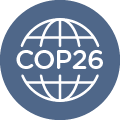Briefs
To keep global warming below 1.5ºC, actions that promote carbon neutrality are necessary, where anthropogenic CO2 emissions are balanced with CO2 sequestration actions. Among carbon dioxide removal (CDR) actions, sequestration by increasing the stock of organic carbon in soils has attracted attention in recent years.
This policy brief presents the results and analysis of an online survey of 136 livestock producers and consultants on the perception of the feasibility and effectiveness of livestock practices and their role in carbon sequestration; gaps and barriers in the introduction of afforestation in the livestock sector; and the opinion regarding the potential economic benefit from the international carbon market.
PDF only available in Spanish.
The document presents a synthesis of the main decisions and results of COP27, prepared on the basis of the COP27 Stocktaking analysis document (Carlino, M. and Caratori, 2022) that was prepared after the Sharm-el-Sheikh meeting, according to the methodology developed by the Torcuato Di Tella Foundation within the framework of the DECARBOOST project, which are expressed in six dimensions and four weighting criteria.
The document is available in Spanish.
In this space for reflection and debate we have examined on several occasions the issue of carbon border adjustments, some of them some time ago and others more recently. The Torcuato Di Tella Foundation has also published some analysis notes on the same issue, with the specific objective of considering Argentina's climate competitiveness in the context of global socioeconomic transitions.
In both cases we emphasized the importance of the effects that this fiscal tool could have on international trade flows in the context of a global economy whose carbon budget is inexorably tending to zero and, in particular, the consequences in terms of Argentina's tradable production of goods and services.
The document is available in Spanish.
The complexity of the international climate regime requires a detailed analysis of the different dimensions of the negotiations in order to assess the progress, delays and stalemates of the successive Conferences of the Parties.
We analyze here one of the decisive aspects of COP27, held in Sharm-el-Sheikh: the proposal for a structural reform of the international financial system and the mobilization of the necessary resources for implementation.
The document is available in Spanish.
This first note in the series on “Energy transitions in Latin America and the
Caribbean” synthesizes some of the key concepts on the characteristics of
these socio-technical transitions as a starting point to address their
problems, the complexity of their processes, and the challenges and
opportunities for the region.
This second note in the series addresses the characteristics of regional energy matrices compared to the rest of the world's regions, as well as the
heterogeneity among countries in the region.
This note explores debt-for-climate action swaps as an innovative idea for
financing the transition to carbon neutrality, relieving the external debt of
low- and middle-income countries while reducing inequality and poverty.
The complete note is only available in Spanish in the following link:
https://nexosmasuno.com/deuda-climatica-voluntad-politica-crisis/
The purpose of this position note is to examine - with an emphasis on contemplating mainly the conditions prevailing in developing countries and, in particular, in Argentina - the various issues related to climate finance, sustainable finance and the structural changes that should allow for an appropriate financial transition in order to enable the full implementation of the Paris Agreement and the achievement of the Sustainable Development Goals.
On November 17, the European Commission approved the "proposal for a regulation on deforestation-free products" for a new European Parliament and Council regulation, with the aim of minimizing the risk of deforestation and forest degradation associated with products placed on the European Union market. PDF only available in Spanish.
The document presents the application of the methodology to evaluate the results of COP26 and some conclusions after the closing of the Glasgow summit.
PDF only available in Spanish.
This document presents a methodology for assessing the results of COP26 and some considerations prior to its closing.
In a forthcoming publication, the methodology will be applied to assess the final results of the Glasgow Summit.
PDF only available in Spanish.
In this sixth publication, we share a brief account of the activities of the first week of COP 26. While some predicted a total failure, others expressed their concern for all that was yet to be resolved and agreed upon.
This first half of the Conference took place against a backdrop of intricate negotiation processes and an effort by a number of countries to show their political will to commit to carbon neutral trajectories.
PDF only available in Spanish.
This fifth note focuses on inequity. The world's largest emitters generate almost 17 times more emissions than the average global population and almost 67 times more than half of the world's population.
Tackling this extreme inequality and aiming to restrict the excess emissions associated with the consumption and investments of the world's richest people is vital to achieving, as was postulated for this COP 26, emissions reductions at scale to keep the 1.5⁰C target alive.
PDF only available in Spanish.
This fourth note focuses on adaptation.
Although adaptation does not seem to take center stage in Glasgow, the new information available, as well as the statements of developing countries associated with this issue, highlight the need to strengthen international cooperation mechanisms for adaptation actions, in science, technology and, in particular, in the provision of financial resources to make these actions feasible, bridging the huge gap that separates today's financing needs from the flows of funds that are available for this purpose.
PDF only available in Spanish.
In this third note, some of the commitments announced to date are reported. These include the following:
Glasgow Leaders' Declaration on Forests and Land Use: initially signed by 128 countries to halt and reverse forest loss and land degradation by 2030. It also includes a series of resource mobilisation commitments, among which 12 donor countries pledged to provide $12 billion.
PDF only available in Spanish.
In this second note, we share some updates from COP26. The statements agree on the need for ambition in action and differ on the pathways to achieve the challenging targets agreed. In this sense, some highlights of the statements of the Prime Minister of Barbados, Mia Mottley, representatives of civil society from developing countries, the UN Secretary General, Antonio Guterres, among others, are presented.
his first edition identifies the expected outcomes of this summit, as outlined by the Executive Secretary of the United Nations Framework Convention on Climate Change, Patricia Espinoza, and some relevant issues from the first day.
PDF only available in Spanish.
This climate summit in Glasgow is likely to be one of the most important since the signing of the Paris Agreement, providing a litmus test of the Agreement's ability to lock in over time the dynamics of the growing collective ambition it has established.
This document, the first in a series of policy briefs dedicated to this matter, sets out to explore issues related to sustainable finance and to consider in particular its recent evolution, examining it from the perspective of strengthening structures for long-term transformation and sustainable development in Argentina and, more generally, in the region.
PDF only available in Spanish.















